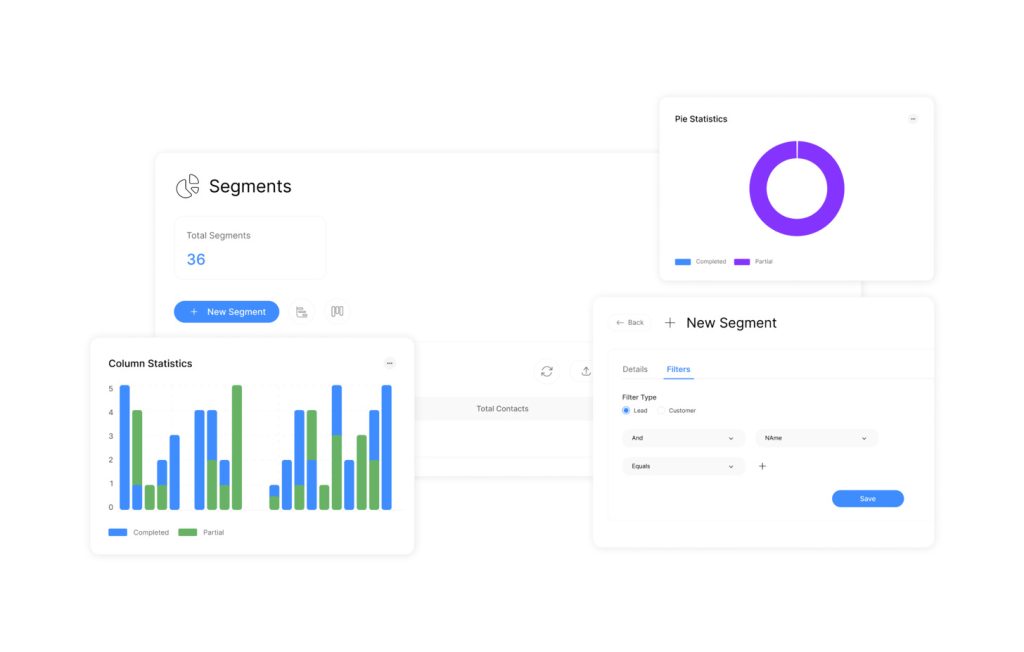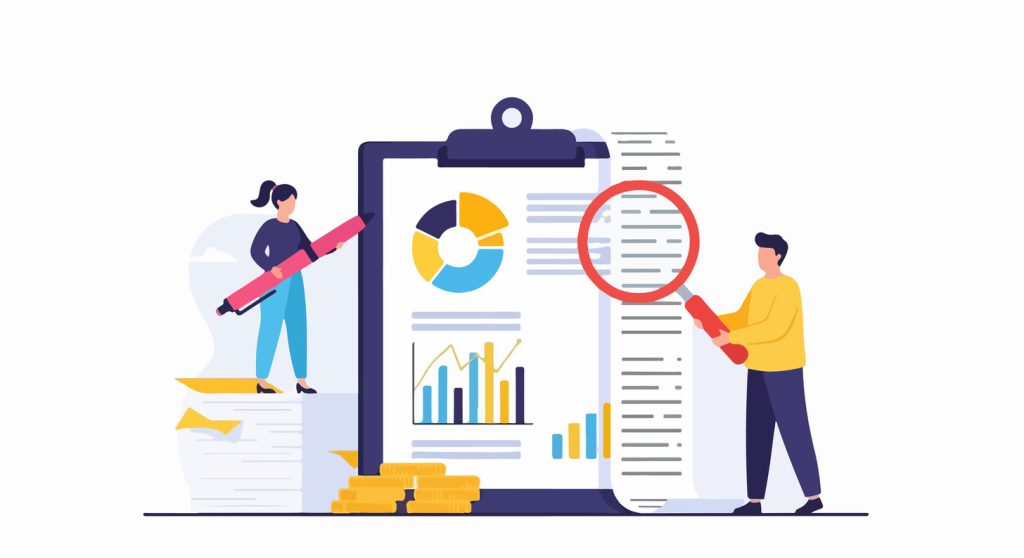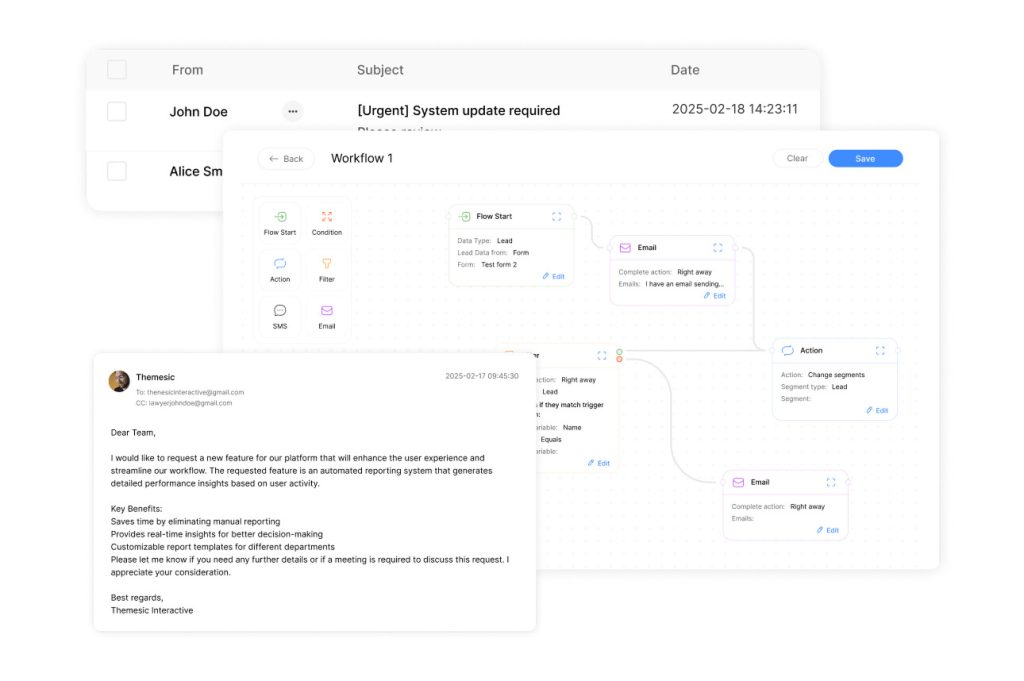Mastering the Art of Segmenting Leads And Customers

In today’s competitive marketplace, businesses thrive by delivering tailored experiences. Strategic grouping of prospects and customers based on behavior, preferences, and engagement unlocks opportunities to refine marketing campaigns. This approach goes far beyond generic outreach, empowering companies to craft messages that speak directly to unique audience needs.
Modern segmentation strategies analyze more than basic demographics. Behavioral patterns, purchase history, and interaction frequency reveal actionable insights. For example, a prospect who repeatedly visits pricing pages may respond better to targeted offers than broad promotions. Recognizing these patterns enables higher conversion rates while reducing wasted resources.
At the core of effective segmentation lies data. Comprehensive analysis helps identify trends and characteristics that define high-value groups. By prioritizing these clusters, teams allocate budgets efficiently, deepen customer relationships, and optimize overall strategy. This level of precision fosters loyalty and positions brands as trusted advisors in their industries.
The result? Sharper campaigns, improved ROI, and scalable growth. Organizations embracing advanced segmentation gain a measurable edge, transforming how they connect with audiences in an increasingly personalized world.
Key Takeaways
- Tailored marketing strategies outperform generic campaigns by addressing specific audience needs.
- Behavioral data and engagement metrics offer deeper insights than traditional demographic analysis.
- Prioritizing high-value groups optimizes budget allocation and strengthens customer relationships.
- Accurate data analysis is critical for identifying meaningful patterns and actionable segments.
- Personalized approaches enhance brand loyalty and competitive positioning.
Understanding the Fundamentals of Lead Segmentation

Successful marketing campaigns hinge on understanding distinct customer groups. Lead segmentation organizes prospects and customers into categories using shared traits like job roles, browsing habits, or purchasing power. This method replaces blanket strategies with precision, letting teams address specific needs instead of guessing at preferences.
How does it work? Businesses gather critical information from CRM systems, website trackers, and purchase records. Data points like geographic location, income level, and content engagement form the building blocks of effective segmentation. For example, frequent visitors to product tutorials might receive technical guides rather than generic newsletters.
“The power of segmentation lies in transforming raw data into actionable insights.”
Three principles drive effective implementation:
- Identify patterns through behavioral analysis
- Prioritize groups showing high conversion potential
- Adjust messaging to match each category’s motivations
This approach minimizes wasted efforts. Marketing budgets flow toward audiences most likely to respond, while irrelevant contacts receive fewer resources. Companies using these fundamentals report 42% higher email open rates and 35% faster sales cycles compared to untargeted campaigns.
Data quality remains critical. Outdated or incomplete information creates flawed groups. Regular updates ensure alignment with evolving customer preferences and market conditions.
Why Customer Segmentation Matters for Business Growth
Tailoring experiences isn’t optional—it’s essential for growth. Businesses that categorize audiences strategically unlock higher engagement, better conversion rates, and increased revenue. Precision transforms generic outreach into meaningful interactions that directly address unique customer needs.
Key Benefits and Increased ROI
Targeted campaigns reduce wasted spending while amplifying results. For instance, beauty giant L’Oréal boosted relevance by analyzing listener preferences to craft 12 distinct ad soundtracks. This approach cut acquisition costs by 23% while maintaining cross-demographic appeal.
“When you speak directly to someone’s preferences, you’re not just selling—you’re building trust.”
Three core advantages emerge:
- Resource efficiency: Focus budgets on groups most likely to convert
- Revenue prioritization: Identify high-value clusters driving 80% of profits
- Market agility: Spot underserved niches before competitors
These strategies extend beyond marketing. Teams refine products using feedback from loyal buyers. Support teams personalize service based on purchase history. The ripple effect elevates entire organizations.
Companies leveraging these methods report 34% faster sales cycles and 19% higher retention. Data-driven categorization isn’t just smart—it’s survival in markets demanding relevance at every touchpoint.
Defining Your Target Audience for Precise Segmentation

Accurate audience definition separates thriving brands from those guessing at preferences. Start by analyzing existing customer data to uncover shared traits like purchasing habits or content engagement. This creates a foundation for meaningful segmentation strategies that align messaging with specific needs.
Creating Detailed Buyer Personas
Effective personas blend demographics with psychographics. Age, income, and location provide structure, but values and lifestyle choices reveal deeper motivations. A fitness brand, for example, might identify health-conscious groups prioritizing sustainability over price.
“Personas aren’t static—they evolve as markets shift and new characteristics emerge.”
Regularly updating profiles ensures relevance. Track changing priorities through surveys, social listening, or purchase patterns. This iterative process turns raw information into actionable insights.
Identifying Core Demographics
Key metrics like age brackets or geographic clusters highlight high-potential targets. Urban professionals aged 30-45 might drive 60% of a tech company’s revenue. Prioritizing these groups streamlines resource allocation.
Combine this with behavioral trends. Frequent buyers of premium products often share income levels or job roles. Mapping these overlaps sharpens campaign precision while reducing wasted outreach.
Collecting and Analyzing Valuable Customer Data

Data-driven decision-making separates industry leaders from competitors scrambling in the dark. Effective strategies require systematic approaches to gather customer information across every interaction point. This process turns fragmented details into clear roadmaps for personalized engagement.
Leveraging CRM Systems
Centralized platforms like Salesforce consolidate critical details into unified profiles. These systems track purchase histories, communication timelines, and service inquiries across channels. A well-maintained CRM reveals which groups engage most frequently and what drives their decisions. By leveraging this data, businesses can tailor their support strategies to enhance customer satisfaction and loyalty. As companies seek to optimize their service offerings, the search for the best CRM for customer support 2025 will intensify, pushing providers to innovate and expand their features. Ultimately, a robust CRM system not only improves internal efficiency but also elevates the overall customer experience.
| CRM Feature | Data Captured | Business Impact |
|---|---|---|
| Contact Management | Job roles, company size | Tailored outreach |
| Purchase History Tracking | Order frequency, product preferences | Upsell opportunities |
| Interaction Logs | Email opens, support tickets | Improved response times |
Tracking User Interactions and Behavior
Modern tools like Userpilot capture granular activity metrics—clicks, hovers, and feature usage. These behavior patterns show which functionalities attract power users versus casual visitors. Teams identify underutilized features needing promotion or redesign.
Real-time dashboards highlight navigation bottlenecks and content consumption habits. Combining this with social media engagement and email response rates creates multidimensional profiles. The result? Campaigns that resonate with specific user types at optimal moments.
Consistent analysis transforms raw numbers into strategic insights. Businesses refine offerings based on tangible evidence rather than assumptions, ensuring resources target high-impact opportunities.
Effective Tools for Lead Segmentation
Modern businesses require precise instruments to organize audiences effectively. Specialized platforms simplify data collection and categorization, transforming raw information into strategic advantages. These solutions empower teams to act on behavioral patterns rather than assumptions.
Userpilot: Collecting Insights and Building Segments
Userpilot excels at capturing granular product interactions. Its no-code interface tracks clicks, hovers, and feature usage across digital platforms. Sentiment analysis tools gauge user satisfaction through in-app surveys and feedback loops.
“The ability to create dynamic groups without technical expertise levels the playing field for smaller teams.”
Key capabilities include:
- Real-time behavior tracking across devices
- Automated group updates based on activity thresholds
- Integration with popular marketing platforms
Salesforce: Streamlining Customer Relationship Management
Salesforce consolidates prospect details into unified profiles. Customizable dashboards display purchase histories, communication logs, and deal pipelines. Workflow automation triggers personalized follow-ups when leads meet predefined criteria. This streamlined approach not only enhances team collaboration but also ensures that no potential lead falls through the cracks. For businesses looking to optimize their sales processes, exploring free lead automation software tools can provide additional support and efficiency. By leveraging these resources, companies can further enhance their sales strategies and maximize conversion rates.
| Feature | Benefit | Use Case |
|---|---|---|
| Lead Scoring | Prioritizes high-potential contacts | Identifying decision-makers in enterprise deals |
| Campaign Analytics | Measures channel effectiveness | Reallocating budgets from underperforming ads |
| AI Forecasting | Predicts conversion likelihood | Adjusting quarterly sales targets |
Implementation success depends on aligning tool capabilities with organizational goals. Mid-sized companies often benefit from Userpilot’s agility, while enterprises leverage Salesforce’s scalability. Regular audits ensure systems adapt to evolving market demands.
Proven Methods to Segment Leads And Customers

Organizations achieve precision marketing by mastering audience division techniques. Effective approaches combine multiple data types to create dynamic profiles that adapt to evolving preferences. This strategy ensures campaigns resonate with specific clusters rather than broad, impersonal blasts.
Combining Data Types for Precision
Demographic analysis forms the backbone of audience categorization. Age ranges, income brackets, and education levels reveal purchasing power disparities. A luxury retailer might target urban professionals aged 35-50, while budget brands focus on younger demographics with tighter spending limits.
Behavioral insights add depth to these profiles. Tracking website navigation paths and purchase frequency identifies high-intent visitors. Customers abandoning carts three times in a week could receive targeted discount offers, converting hesitation into sales.
“The most impactful strategies layer geographic and psychographic elements onto core demographic data.”
| Method | Key Indicators | Strategic Impact |
|---|---|---|
| Geographic | Regional dialects, climate needs | Localized product variations |
| Psychographic | Hobbies, sustainability values | Brand loyalty cultivation |
| Transactional | Average order value, frequency | VIP program development |
Needs-based categorization solves specific pain points. Software companies might separate users struggling with integrations from those seeking advanced features. Each group receives tailored onboarding materials, reducing support tickets by 19% according to TechJunction’s 2024 report.
Successful implementations continuously refine criteria. Monthly data reviews ensure categories reflect current market conditions. Teams using hybrid methods report 27% higher campaign performance than single-method approaches.
Implementing Segmentation in Marketing and Sales
Bridging departmental gaps creates measurable advantages in customer acquisition. When marketing and sales teams operate from shared insights, campaigns gain precision while outreach efforts align with buyer readiness. This synergy transforms disjointed tactics into revenue-driving systems.
Aligning Marketing and Sales Efforts
Marketing-qualified leads (MQLs) represent early-stage prospects exploring solutions. These contacts match ideal profiles but need nurturing through educational content. Sales-qualified leads (SQLs), however, exhibit clear intent through repeated engagement or direct inquiries. Differentiating between these groups ensures resources target the right stage of the funnel.
“Shared lead scoring criteria eliminate friction between departments, turning handoffs into growth opportunities.”
Three practices drive alignment:
- Define unified qualification metrics for MQL-to-SQL transitions
- Automate lead routing based on behavioral triggers
- Conduct monthly cross-team performance reviews
| Lead Type | Qualification Criteria | Sales Strategy |
|---|---|---|
| MQL | Downloads whitepapers, attends webinars | Nurture via case studies |
| SQL | Requests demos, compares pricing | Schedule discovery calls |
Regular calibration meetings keep segmentation strategies relevant. Marketing adjusts content for emerging trends, while sales refines outreach based on conversion patterns. This dynamic approach reduces wasted efforts by 31% according to 2024 HubSpot data.
Success hinges on transparent communication. Shared dashboards display real-time lead progression, enabling proactive adjustments. Teams prioritizing this cohesion report 28% shorter sales cycles and 19% higher deal values. These outcomes can be further enhanced with effective lead tracking solutions for businesses, which provide critical insights into customer behavior and preferences. By leveraging data analytics, teams can identify trends and tailor their approaches, ultimately driving increased sales performance. Emphasizing collaboration and technology integration empowers teams to stay agile and responsive in a competitive marketplace.
Optimizing Marketing Campaigns with Targeted Segmentation

Businesses achieve peak campaign performance when strategies align with audience behaviors. Precision grouping enables hyper-relevant messaging that converts casual browsers into loyal buyers. This approach transforms generic outreach into strategic engagements.
Tailoring Content for Specific Groups
Behavioral patterns dictate content preferences. Streaming services like Netflix analyze viewing habits to suggest shows matching individual tastes. This strategy boosted their retention rates by 18% in 2023. Brands can replicate this success by:
- Matching visuals to regional preferences
- Adjusting offers based on purchase history
- Personalizing email subject lines using browsing data
“Recommendation engines drive 75% of Netflix viewer activity—proof that tailored content builds habitual engagement.”
Efficient Resource Allocation
Focusing budgets on high-potential groups maximizes returns. Mid-tier buyers receiving personalized upsell offers convert 12% more often than those getting generic promotions. A comparative analysis reveals stark contrasts:
| Campaign Type | Open Rate | Conversion Rate |
|---|---|---|
| Generic Email Blast | 14% | 2.1% |
| Segmented Campaign | 31% | 6.8% |
Automated tools identify high-value clusters through real-time data analysis. Teams then allocate budgets to campaigns showing the strongest engagement signals. This method reduces wasted ad spend by up to 40%.
Continuous optimization remains critical. Monthly A/B tests refine messaging for evolving preferences. Brands adopting this cycle see 27% higher year-over-year ROI from targeted efforts.
Advanced Segmentation Techniques and Best Practices
Forward-thinking companies now use predictive analytics to stay ahead of market shifts. By analyzing historical trends and real-time signals, businesses identify high-potential groups before competitors do. This proactive approach transforms raw data into strategic foresight.
Leveraging Predictive Models
Machine learning tools process behavioral data to forecast buyer actions. A telecom company might predict contract renewals by examining service usage patterns. These insights allow teams to craft retention offers 30 days before decisions occur.
“Algorithms don’t replace intuition—they amplify it by highlighting patterns humans might miss,” explains a McKinsey report on AI-driven marketing.
Best practices include:
- Combining CRM data with external market indicators
- Testing predictions against actual outcomes monthly
- Training staff to interpret model outputs effectively
Continuous refinement is crucial. Brands updating their algorithms quarterly see 27% higher ROI than annual updaters. Pair these systems with dynamic campaign tools to automate personalized outreach at scale.
The future belongs to organizations blending technology with human expertise. Those mastering these advanced methods build unshakeable market positions while delivering unmatched relevance.

